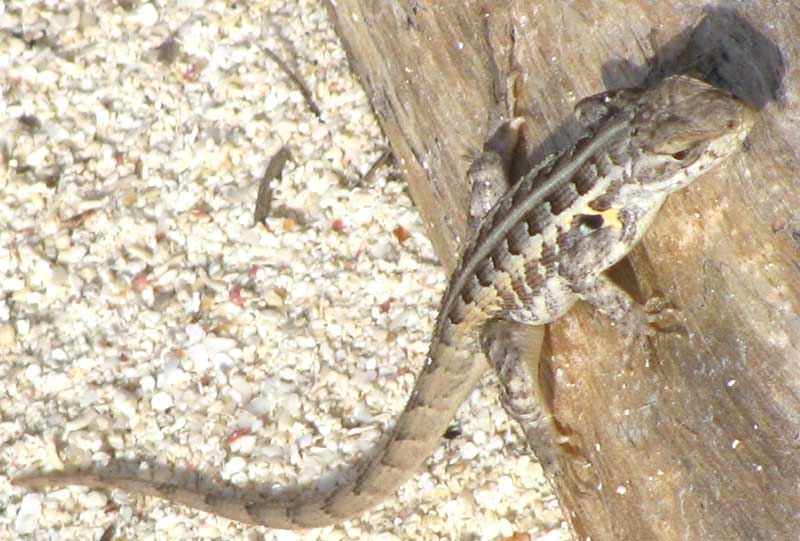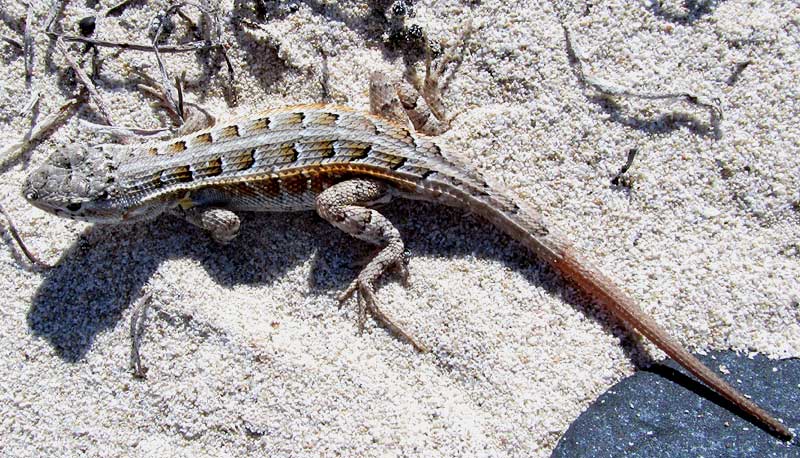Excerpts from Jim Conrad's
Naturalist Newsletter
from the August 14, 2011 Newsletter issued from written at Mayan Beach Garden Inn 20 kms north of Mahahual; Caribbean coastal beach and mangroves, ~N18.89°, ~W87.64°, Quintana Roo state, MÉXICO
LIZARDS ON THE BEACH
We've met several spiny lizard species, from Oregon to Mississippi to Chiapas, Querétaro and here, all of the big, poorly understood genus Sceloporus. Throughout the day on our hot, sun-drenched sandy beaches you're likely to see a Sceloporus spiny lizard like the one shown below:

It's sort of surprising that so many lizards occupy this beach, since our sand rise is so vulnerable to total flooding during hurricanes. Surely Hurricane Dean in 2007, the third most intense Atlantic hurricane to make landfall in history, and which came ashore here, wiped them out along this beach. Maybe the ones seen now hatched from buried eggs.
from the February 1, 2015 Newsletter issued from Río Lagartos, on the Yucatan Peninsula's northern coast (~N21.60°, ~W88.16°), Yucatán state, MÉXICO
COZUMEL SPINY LIZARD
Between the Gulf of Mexico's waters and the low sand dunes a stone's throw inland, the sand was so glaringly white, the air so hot and salty, and the wind so blustery that the odor of decaying seaweed and the sight of a dead sea turtle with its head chopped off all seemed to fit together. What was surprising was a little lizard only about four inches long (10cm) apparently doing very well. You can see him below:

We've met this fellow before, on the Yucatan's Caribbean beach just north of Mahahual. He's the Cozumel Spiny Lizard, SCELOPORUS COZUMELAE, endemic just to the coastal Yucatan Peninsula, including Campeche state in the west and Quintana Roo state in the east, and offshore islands.
This lizard didn't seem nervous about having a human looming above him with a camera lens only a finger length away. After I'd taken the above photograph I poked at him just to be sure that he was OK, but before the finger made contact he quickly scurried away.
Though Cozumel Spiny Lizards appear to be limited to the narrow, sandy beach zone along the coast, they're common wherever they do occur, and for this reason they're not regarded as an endangered species. However, so much coastal habitat in the Yucatan is being converted to beachfront homes and tourist infrastructure that the species habitat is being rapidly reduced and its future is of concern.